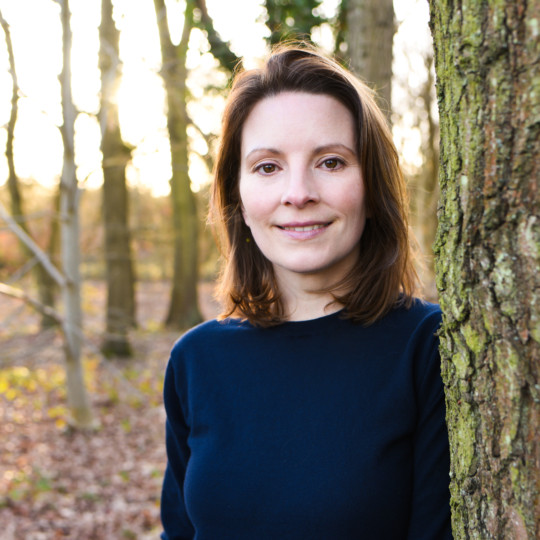Dr Reid will explore and document the presence of Surrealist objects and influences in the Kettle’s Yard archives and collections. As a renowned centre of Modernism in the British context, Jim Ede’s Kettle’s Yard has not been read in its Surrealist aspects, which are suggested by a range of objects and archival materials there. Ede’s St Edmund is a piece of charred willow found on the river Cam with echoes of Marsh Personage, Surrealist Paul Nash’s 1934 found ‘wooden sculpture’, salvaged from a stream and resonant with ‘the life of the inanimate object’ that he discerned in his works. Ede’s ‘bird’ (seedpod) and ‘egg’ (pebble) assemblage, located in the upstairs sitting room at the house, works with uncanny associations of birds, nests, eggs and stones that run through Surrealism. Named by native American tribes as the ‘devil’s claw’ owing to its pronounced sharp hooks, Ede’s seedpod is reminiscent of a 1934 debate between Surrealists André Breton and Roger Caillois regarding the phenomenon of the ‘Mexican jumping bean’ seedpod as illustrative of the essential character of the ‘marvellous’. Ede made anthropomorphic assemblages of stones and flints that are displayed in the house, he wrote of the influence of Salvador Dali on his mantelpiece arrangement of shells.
Dr Reid will shed new light on the Kettles Yard home, archive and collection by attending to the presence and activity of unexpected surrealist objects and strategies within it. This work is conceived and devised in collaboration with Curatorial Assistant Eliza Spindel. It aims to contribute to an expansion of the history of British Surrealism and as such connects to Professor Alyce Mahon’s current research addressing British Surrealism and in particula the unexamined archive of Ithell Colquhoun (1906-88), with which I will forge a dialogue.
British Surrealism is still a neglected field for Surrealist studies. This research will expand knowledge of the global Surrealist movement, in its focus on the subject of Surrealism in the context of the rise of research and knowledge in life science and ecology developed in and following the inter-war period in Britain.
The Kettle’s Yard archive is studded with materials and references relating to empirical science: geology (Jaquetta Hawkes, Herbert Hawkins), botany (the mycologist John Ramsbottom, Robert Gathorne-Hardy) and ethnology (Sir James George Frazer). These materials will inform the reading of Ede’s surrealist sensibilities, evident in his interest in found objects that are shell, bone, stone, plant or mineral – objects of the ancient land as opposed to the more modern and urban materials associated with André Breton’s European Surrealism.
This research is particularly timely as an investigation of an unseen dimension of Surrealism in the British context. The Tate and Metropolitan Museum of Art exhibition Surrealism Beyond Borders arrives in London in 2022 and includes few examples drawn of British contexts.
The research will build on Dr Reid’s doctoral research, which reads British Surrealism of the interwar period in the context of concurrent new discoveries in geophysical science, notably by Arthur Holmes (1890-1965) who identified radioactivity in minerals and rocks and placed an astounding new date on the age of the earth. My publications demonstrate major new insights into the ‘geological realism’ of British landscape art of the period, with a focus on the work of Paul Nash and the Surrealist concept of the Marvellous. Surrealist studies are undergoing expansion in geo-political and methodological terms and I see my work as aligned to that of Kristoffer Noheden whose current research project Imagination Against Anthropocentrism: Surrealism and Ecology investigates the Surrealist unconscious as a zone of contact with nature and animals. My distinctive approach focuses on the very specific potential of the ecological offer of Surrealism in its British contexts and it will connect with Noheden’s study in attending to parallel, materialist and scientific impetuses.
The project will also connect with contemporary artists working with legacies of British Surrealism. Notably, the film and video artist Melanie Smith whose 2012 Xilitla explores Surrealist collector Edward James’ 1940s garden, Los Posas, Mexico. I would aim to use the CVC seminar as a way to bring together a range of contemporary artists working with Surrealist strategies, with a particular interest in attending to queer perspectives (legible for example in Lucy Skaer’s reading of Paul Nash), drawn of international British contexts.
The project will draw on collections across Cambridge including The Fitzwilliam Museum, which holds works by a range of under-examined Surrealists e.g. Ceri Richards’ 1965 The Force that Through the Green Fuse Drives the Flower. Sixteen ‘Oceanian Objects’ were lent by the Cambridge University Museum of Archaeology and Anthropology for display as part of the 1936 International Surrealist Exhibition in London. I will aim to illuminate unseen landscapes of post-colonial interactions with indigenous and ancestral knowledge, in their problematics and in their ecological possibilities.



